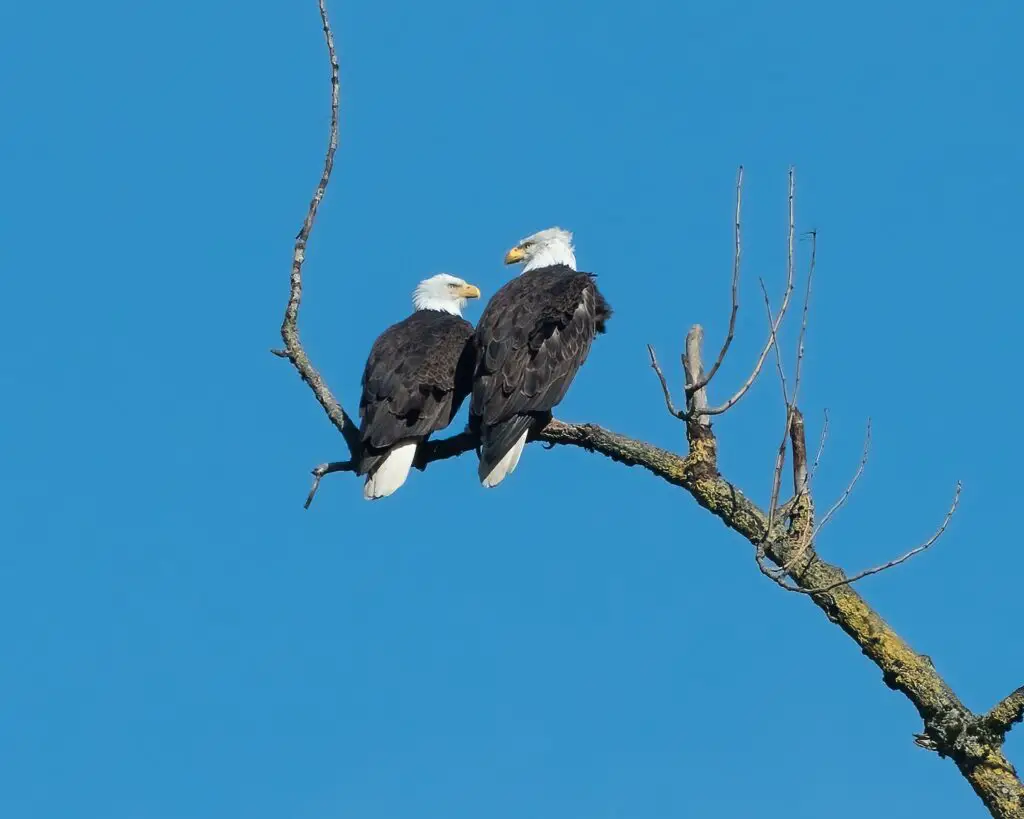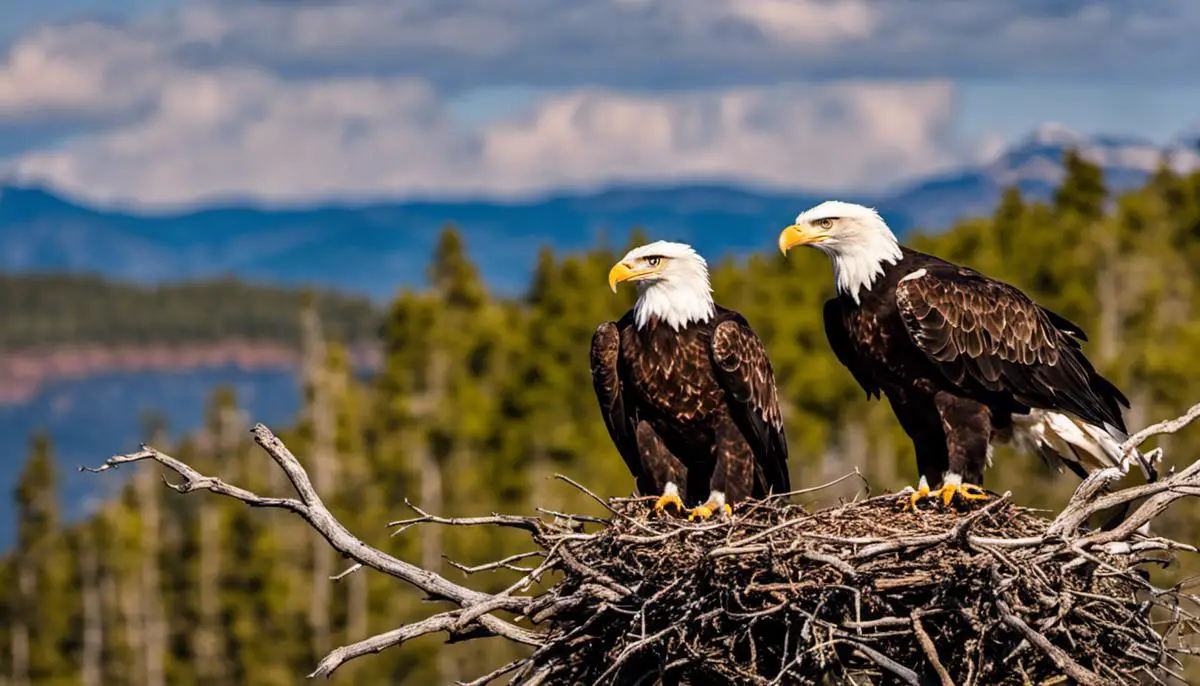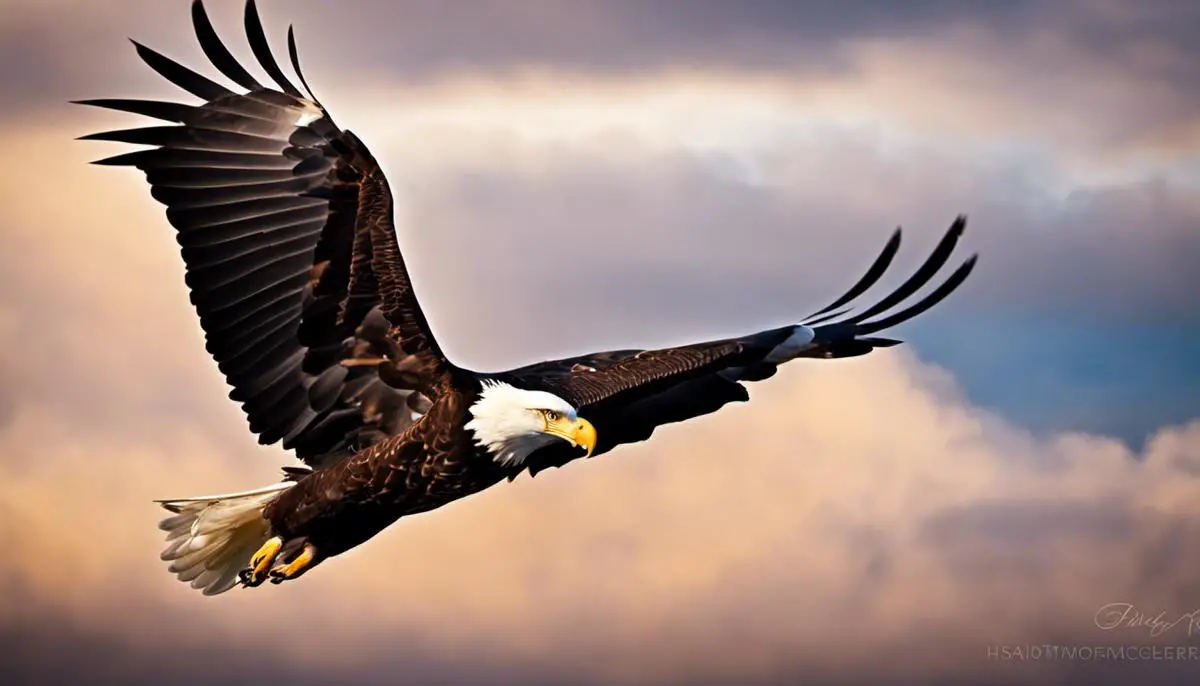Bald Eagles: Unveiling the Differences between Males and Females
An intriguing exploration into the world of bald eagles unravels significant contrasts between the sexes, sparking thought-provoking insights into their physical attributes, parental roles, distinctive behaviour, and health nuances.
The physical and visual disparities between male and female bald eagles are paramount to understanding their biological roles, survival tactics, and mating behaviours. The nuanced roles each sex plays in parenting and nesting significantly influence their survival and sustenance strategies, while enriching our understanding of their unique lifecycle.
Furthermore, a study of their behavioural delineations provides pivotal insights into their diverse survival tactics, social interactions, and adaptations to their habitats. Lastly, examining lifespan and health indicators not only shapes our comprehension of their vitality and resilience but also offers potential explanations for prevalent health afflictions and different sex-based mortality rates.

Physical and Visual Differences
Physical Differences Between Male and Female Bald Eagles
The most noticeable physical difference between male and female bald eagles is their size. Female bald eagles are significantly larger than their male counterparts. In fact, female eagles can be anywhere from 25% to 33% larger. This size variation is also reflected in their wingspan. The average wingspan of a female bald eagle ranges from 2.3 to 2.5 meters, while male bald eagles have a wingspan of 1.8 to 2.3 meters.
Weight Variations in Male and Female Bald Eagles
In addition to size, there is a significant difference in the weight of male and female bald eagles. Male bald eagles typically weigh between 3 and 4 kilograms whereas females weigh between 4.5 and 6.3 kilograms. This difference in weight can be attributed to the fact that female bald eagles need to be larger in order to protect their eggs and young.
Feather Characteristics of Bald Eagles
Despite the size and weight difference between male and female bald eagles, there is little difference in terms of their feather characteristics. Both sexes possess the iconic white head and tail feathers, contrasted by a dark brown body. These feathers start to turn white as the eagle matures, with a full white head and tail typically achieved by the age of five years.
Visual Distinctions to Determine Sex of Bald Eagles
Determining the sex of a bald eagle in the wild can be a challenge due to the lack of obvious visual differences, like in many bird species. However, through careful observation, one might draw conclusions based on their behavioural patterns. For instance, during nesting season, it’s common that the larger bald eagle (usually the female) will spend more time in the nest than the smaller one. However, it’s important to note that this is merely an indicator and not a definitive way to identify the gender, as both males and females participate in nest duties.
On rare occasions, bill depth has been used as a means of distinguishing between male and female bald eagles. According to research, female bald eagles tend to have slightly deeper bills as compared to males.
Conclusively
Despite there being physical differences between male and female bald eagles, these distinctions are relatively understated. Indicators such as size, weight, and occasionally, behaviour patterns can be used to determine the gender of these majestic birds.

Roles in Parenting and Nesting
Bald Eagle Gender Roles: An Equal Allocation of Parenting and Nesting Activities
The bald eagles, scientifically termed Haliaeetus leucocephalus, are reputed for dividing their roles of parenting and nesting tasks imperturbably between males and females. Each one strikes a balance in duties like nest construction, incubation, hunting, and offspring care to assure the continuation of their lineage.
Likewise, for many other bird species, the initial shared responsibility is nest building. The bald eagle employs a diverse assortment of materials, from twigs to moss and feathers, meticulously entwined together to construct a secure and cozy abode for their future offspring. The male and female work collaboratively to gather and assemble these components, signifying an equitable way forward for this primary task.
Courtship and Mating: A Spectacular Display from Both Sexes.
The mating ritual of the bald eagle is a somewhat awe-inspiring spectacle that involves a series of acrobatic displays in the sky. These theatrics are commenced by the male, exhibiting an array of aerial stunts, such as cartwheels and death spirals, to attract the female. Once captivated, it becomes an interaction, and the female reciprocates these ostentatious displays to signal her acceptance. Thus begins their monogamous relationship, which often lasts for life.
Bald Eagle Incubation: A Shared Duty
Bald eagle females usually lay one to three eggs per clutch. In contrast to certain species where only the female undertakes incubation responsibilities, bald eagles present a delightful role of equality, as both male and female take turns to keep the eggs warm. The incubation period typically lasts about 35 days and demands a constant body presence to maintain optimal temperatures and predator protection.
Caring for Eaglets: The Division of Labour
Upon hatching, the herculean task of caring for the newborns becomes evident. Again, both male and female bald eagles share this burden, albeit with differences in specific tasks. While the female generally spends more time at the nest caring for the young, the male eagle embarks on the strategic role of foraging for food to sustain the young family. However, the male also relieves the female of her brooding duties at times, confirming the changing dynamics and stirring symbiosis of the bald eagles’ parental responsibilities.
Summary: The Ballet of Balance in Bald Eagles
The bald eagle realm portrays an eloquent equilibrium of tasks between the males and females, particularly in the sphere of rearing offspring and nest maintenance. This reciprocal dependency begins with courtship and mating, followed by nest construction and egg incubation, extending until the eaglets are sufficiently nurtured. The bald eagles, hence, embody an admirable ballet of balance and mutual support, each executing their duties meticulously to ensure the survival and propagation of their descendants.

Behavioural Differences
Distinct Feeding Habits and Hunting Approaches of Bald Eagles
Bald eagles primarily follow a piscivorous diet, with a preference for salmon, trout, and other freshwater fishes. However, studies and observations have indicated varied dietary patterns between males and females. Males, owing to their smaller size—usually 25–35% smaller than females—generally pursue smaller prey. This differential prey preference minimizes intra-species competition for resources, guaranteeing that both genders have access to adequate nourishment.
In addition to this, the hunting strategies between male and female bald eagles also differ. Males, being smaller and more nimble, usually engage in aerial hunting tactics, whereas females, due to their greater size, tend to focus on ground-based hunting. Their unique hunting methodology enables each gender to maximize its energy utilisation by targeting the most accessible food sources, consequently reducing competition.
Migration Habits: Female and Male Bald Eagles
In terms of migration, male and female bald eagles are generally found to follow similar migratory patterns, predominantly dictated by weather conditions and food availability. As they are not sexually dimorphic in terms of their plumage—except for their relative sizes—both genders exhibit comparable strengths of migratory connectivity.
However, slight differences in the timing of breeding tend to occur. Females, due to their involvement in the fertilization process and the necessity to lay and incubate eggs, are observed to commence their migration slightly earlier than males. Conversely, males tend to spend a lengthier period in their wintering areas, arriving at the breeding grounds later than females.
Responses to Threats
When faced with a threat, both male and female bald eagles exhibit similar instinctive defensive behaviours. They adopt an aggressive posture, spreading their wings wide and openly displaying their talons in an attempt to dissuade perceived threats. However, when defending the nest, the larger and stronger females are often the ones to take the lead.
Social Behaviour
Bald eagles are monogamous creatures, showing a strong pair bond that extends over many breeding seasons. Behavioural divergence between the sexes is visible during courtship rituals. Males engage in a variety of spectacular aerial displays to attract and secure a mate, while females involve themselves in building and arranging the nest. Although post-fertilization, both genders show cooperative behaviours in raising the young.
Concluding Thoughts
Whether you consider their striking visual appearance or their intriguing social behaviour, both male and female bald eagles offer a wealth of interest. The marked resemblances between the genders, as well as the few distinct features and breeding role variations, are noteworthy.

Lifespan and Health
Comparing the Longevity of Male and Female Bald Eagles
With the scientific name of Haliaeetus leucocephalus, bald eagles are renowned for their impressive lifespan, which on average, spans from 20 to 40 years in the wild and even up to 50 years in captivity. Observations indicate a comparative evenness in longevity between males and females. With minor regional or situational variations, the survival rates for both sexes are nearly equal in the wild. This parity is largely due to commonalities such as diet and behaviours, in addition to shared exposure to potential threats.
Considering threats, male and female bald eagles experience similar natural and human-influenced risks. These include habitat loss, illegal hunting, and toxic contamination from substances such as lead or DDT. These risks may adversely impact their lifespan, irrespective of their gender.
Health Issues and Diseases in Male and Female Bald Eagles
Observationally, in terms of health issues and diseases in bald eagles, both genders are susceptible to similar ailments because of their shared living conditions, food sources, and shared genetics. Both are equally vulnerable to diseases such as avian pox, parasitic reactions, lead poisoning, and viral diseases such as Eagle Pox or Avian Influenza, as these illnesses are not gender-specific.
Lead poisoning is one of the most common disease-related causes of death in bald eagles, which they contract by scavenging on the remains of hunted animals that contain lead bullet fragments. This form of poisoning is equally dangerous to both males and females.
Potential Reasons for Health Differences in Bald Eagles
While there is no definitive health difference between male and female bald eagles, gender-specific behaviour during mating and hatching seasons could potentially cause varied health implications. For instance, during the breeding season, the female bald eagle takes on the primary role of incubating eggs and remains in the nest most of the time. This situation could theoretically increase her exposure to nest-based parasites or infections than the more mobile male.
External factors, like climate change, habitat loss, food availability, and exposure to toxins, also play a significant role in influencing the health and well-being of both male and female bald eagles. Ultimately, more research is required to definitively analyze if any subtle or nuanced health-related gender differences exist amongst these majestic birds.

Having delved into the disparate realms of male and female bald eagles – their physical traits, nesting and parenting roles, behavioural patterns, and health signposts – a palpable reflection of the striking complexities and intricacies of nature emerges.
These avian giants not only embody the furious beauty and primal survival instincts that signify nature at its purest but also echo the harmonic balance in the dichotomy of sexes that sustains any species.
The robust examination and comparative analysis of these compelling topics illuminate our understanding of the bald eagle’s adaptability, resilience, and astuteness, culminating in a comprehensive, multidimensional view of their life, challenges, and survival in their captivating habitats.
